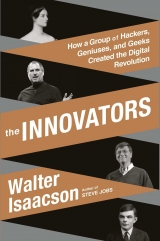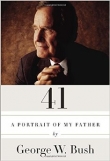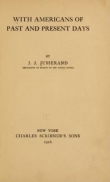
Текст книги "The Innovators: How a Group of Inventors, Hackers, Geniuses, and Geeks Created the Digital Revolution"
Автор книги: Walter Isaacson
Жанр:
Биографии и мемуары
сообщить о нарушении
Текущая страница: 26 (всего у книги 42 страниц)

Steve Jobs (1955–2011) and Steve Wozniak (1950– ) in 1976.

Jobs graphic on the original Macintosh in 1984.

Richard Stallman (1953– ).

Linus Torvalds (1969– ).
The March 1975 first gathering of the Homebrew Computer Club came just after Wozniak had finished designing Breakout. At the outset of the meeting, he felt out of place. He had been making calculators and home television game displays, but most of the excitement at that meeting centered on the new Altair computer, which didn’t initially interest him. Shy at the best of times, he withdrew into a corner. He later described the scene: “Someone there was holding up the magazine Popular Electronics, which had a picture of a computer on the front of it called the Altair. It turned out all these people were really Altair enthusiasts, not TV terminal people like I thought.” They went around the room introducing themselves, and when Wozniak’s turn came he said, “I’m Steve Wozniak, I work at Hewlett-Packard on calculators and I designed a video terminal.” He added that he also liked video games and pay movie systems for hotels, according to the minutes taken by Moore.
But there was one thing that piqued Wozniak’s interest. A person at the meeting passed around the specification sheet for the new Intel microprocessor. “That night, I checked out the microprocessor data sheet and I saw it had an instruction for adding a location in memory to the A register,” he recalled. “I thought, Wait a minute. Then it had another instruction you could use for subtracting memory from the A register. Whoa. Well, maybe this doesn’t mean anything to you, but I knew exactly what these instructions meant, and it was the most exciting thing to discover ever.”
Wozniak had been designing a terminal with a video monitor and a keyboard. He had planned for it to be a “dumb” terminal; it would have no computing power of its own, and instead it would connect via a phone line to a time-shared computer somewhere else. But when he saw the specs for the microprocessor—a chip that had a central processing unit on it—he had an insight: he could use a microprocessor to put some of the computing power into the terminal he was building. It would be a great leap from the Altair: a computer and a keyboard and a screen all integrated! “This whole vision of a personal computer just popped into my head,” he said. “That night, I started to sketch out on paper what would later become known as the Apple I.”
After a day of work on calculator design at HP, Wozniak would go home for a quick dinner and then return to his cubicle to work on his computer. At 10 p.m. on Sunday, June 29, 1975, a historic milestone occurred: Wozniak tapped a few keys on his keyboard, the signal was processed by a microprocessor, and letters appeared on the screen. “I was shocked,” he confessed. “It was the first time in history anyone had typed a character on a keyboard and seen it show up on the screen right in front of them.” That was not precisely true, but it was indeed the first time a keyboard and a monitor had been integrated with a personal computer designed for hobbyists.
The mission of the Homebrew Computer Club was to share ideas freely. That put it in the crosshairs of Bill Gates, but Wozniak embraced the communal ethos: “I so believed in the club’s mission to further computing that I Xeroxed maybe a hundred copies of my complete design and gave it to anyone who wanted it.” He was too shy, initially, to stand in front of the group and make a formal presentation, but he was so proud of his design that he loved standing in the back, showing it off to any who gathered around, and handing out the schematics. “I wanted to give it away for free to other people.”
Jobs thought differently, just as he had with the Blue Box. And as it turned out, his desire to package and sell an easy-to-use computer—and his instinct for how to do it—changed the realm of personal computers just as much as Wozniak’s clever circuit design did. Indeed, Wozniak would have been relegated to minor mentions in the Homebrew newsletter had Jobs not insisted that they create a company to commercialize it.
Jobs began calling chip makers such as Intel to get free samples. “I mean, he knew how to talk to a sales representative,” Wozniak marveled. “I could never have done that. I’m too shy.” Jobs also started accompanying Wozniak to Homebrew meetings, carrying the television set and conducting the demonstrations, and he came up with a plan to sell circuit boards preprinted with Wozniak’s design. It was typical of their partnership. “Every time I’d design something great, Steve would find a way to make money for us,” said Wozniak. “It never crossed my mind to sell computers. It was Steve who said, ‘Let’s hold them in the air and sell a few.’ ” Jobs sold his Volkswagen Bus and Wozniak sold his HP calculator to raise funding for their endeavor.
They made an odd but powerful partnership: Woz was an angelic naïf who looked like a panda, Jobs a demon-driven mesmerizer who looked like a whippet. Gates had bullied Allen into giving him more than half of their partnership. In the case of Apple, it was Wozniak’s father, an engineer who respected engineers and disdained marketers and managers, who insisted that his son, who had made the designs, be given more than 50 percent of the partnership. He confronted Jobs when he came by the Wozniak house: “You don’t deserve shit. You haven’t produced anything.” Jobs began to cry and told Steve Wozniak that he was willing to call off the partnership. “If we’re not 50-50,” Jobs said, “you can have the whole thing.” Wozniak, however, understood what Jobs contributed to their partnership, and it was worth at least 50 percent. If he had been on his own, Wozniak might not have progressed beyond handing out free schematics.
After they demonstrated the computer at a Homebrew meeting, Jobs was approached by Paul Terrell, the owner of a small chain of computer stores called The Byte Shop. After they talked, Terrell said, “Keep in touch,” handing Jobs his card. The next day Jobs walked into his store barefoot and announced, “I’m keeping in touch.” By the time Jobs had finished his pitch, Terrell had agreed to order fifty of what became known as the Apple I computer. But he wanted them fully assembled, not just printed boards with a pile of components. It was another step in the evolution of personal computers. They would not be just for solder-gun-wielding hobbyists anymore.
Jobs understood this trend. When it came time to build the Apple II, he did not spend much time studying microprocessor specs. Instead he went to Macy’s at the Stanford mall and studied the Cuisinart. He decided that the next personal computer should be like an appliance: all fit together with a sleek case and no assembly required. From the power supply to the software, from the keyboard to the monitor, everything should be tightly integrated. “My vision was to create the first fully packaged computer,” he explained. “We were no longer aiming for the handful of hobbyists who liked to assemble their own computers, who knew how to buy transformers and keyboards. For every one of them there were a thousand people who would want the machine to be ready to run.”
By early 1977 a few other hobbyist computer companies had bubbled up from the Homebrew and other such cauldrons. Lee Felsenstein, the club’s master of ceremonies, had launched Processor Technology and come out with a computer called Sol. Other companies included Cromemco, Vector Graphic, Southwest Technical Products, Commodore, and IMSAI. But the Apple II was the first personal computer to be simple and fully integrated, from the hardware to the software. It went on sale in June 1977 for $1,298, and within three years 100,000 of them were sold.
The rise of Apple marked a decline of hobbyist culture. For decades young innovators such as Kilby and Noyce had been introduced to electronics by knowing how to distinguish different transistors, resistors, capacitors, and diodes, then wire-wrapping or soldering them into breadboards to create circuits that became ham radios, rocket controllers, amplifiers, and oscilloscopes. But in 1971 microprocessors began making complex circuit boards obsolete, and Japanese electronics companies began mass-producing products that were cheaper than homemade ones. Sales of do-it-yourself kits withered away. Hardware hackers such as Wozniak ceded primacy to software coders such as Gates. With the Apple II and then, more notably, the Macintosh in 1984, Apple pioneered the practice of creating machines that users were not supposed to open and fiddle with their innards.
The Apple II also established a doctrine that would become a religious creed for Steve Jobs: his company’s hardware was tightly integrated with its operating system software. He was a perfectionist who liked to control the user experience end to end. He didn’t want to let you buy an Apple machine and run someone else’s clunky operating system on it, nor buy Apple’s operating system and put it on someone else’s junky hardware.
That integrated model did not become standard practice. The launch of the Apple II woke up the big computer companies, most notably IBM, and prompted an alternative to emerge. IBM—more specifically IBM as it was outmaneuvered by Bill Gates—would embrace an approach in which the personal computer’s hardware and its operating system were made by different companies. As a result, software would become king, and, except at Apple, most computer hardware would become a commodity.
DAN BRICKLIN AND VISICALC
For personal computers to be useful, and for practical people to justify buying them, they had to become tools rather than merely toys. Even the Apple II might have been a passing fad, once the excitement of the hobbyists receded, if users had not been able to apply it to a practical task. Thus there arose a demand for what became known as application software, programs that could apply a personal computer’s processing power to a specific chore.
The most influential pioneer in that field was Dan Bricklin, who conceived the first financial spreadsheet program, VisiCalc.83 Bricklin was an MIT computer science graduate who spent a few years developing word-processing software at Digital Equipment Corporation and then enrolled at Harvard Business School. Sitting in a lecture one day in the spring of 1978, he watched as the professor created the columns and rows for a financial model on the blackboard. When he found an error or wanted to modify a value in one cell, the professor had to use his eraser and change the values in many of the other cells.84
Bricklin had seen Doug Engelbart demonstrate his oNLine System, made famous at the Mother of All Demos, which featured a graphical display and a mouse for pointing and clicking. Bricklin began envisioning an electronic spreadsheet that would use a mouse and simple point-drag-and-click interface. That summer, while riding a bike on Martha’s Vineyard, he decided to turn the idea into a product. He was well suited for such an endeavor. He was a software engineer with the instincts of a product person; he had a feel for what users would want. His parents were entrepreneurs, and he was excited by the prospect of starting a business. And he was a good team player, who knew how to find the right partners. “I had the right combination of experience and knowledge to develop software that met a need people had,” he observed.85
So he teamed up with a friend he had met at MIT, Bob Frankston, another software engineer whose father was an entrepreneur. “The ability for Dan and me to work as a team was crucial,” Frankston said. Although Bricklin could have written the program alone, instead he sketched it out and had Frankston develop it. “It gave him the freedom to focus on what the program should do rather than how to do it,” Frankston said of their collaboration.86
The first decision they made was to develop the program for use on a personal computer rather than on a DEC business computer. They chose the Apple II because Wozniak had made its architecture open and transparent enough that the functions needed by software developers were easily accessible.
They created the prototype over a weekend on an Apple II they borrowed from someone who would, in effect, become a third collaborator, Dan Fylstra. A recent graduate of Harvard Business School, Fylstra had launched a software publishing company, which focused on games such as chess, that he ran out of his Cambridge apartment. In order for a software industry to develop separately from the hardware industry, it was necessary to have publishers who knew how to promote and distribute products.
Because both Bricklin and Frankston had good business sense and a feel for consumer desires, they focused on making VisiCalc a product, not just a program. They used friends and professors as focus groups to make sure the interface was intuitive and easy to use. “The goal was to give the user a conceptual model that was unsurprising,” Frankston explained. “It was called the principle of least surprise. We were illusionists synthesizing an experience.”87
Among those who helped turn VisiCalc into a business phenomenon was Ben Rosen, then an analyst with Morgan Stanley who later turned his influential newsletter and conferences into a business of his own and then started a venture capital firm in Manhattan. In May 1979 Fylstra demonstrated an early version of VisiCalc at Rosen’s Personal Computer Forum in his hometown of New Orleans. In his newsletter, Rosen enthused, “VisiCalc comes alive visually. . . . In minutes, people who have never used a computer are writing and using programs.” He ended with a prediction that came true: “VisiCalc could someday become the software tail that wags (and sells) the personal computer dog.”
VisiCalc catapulted the Apple II to triumph, because for a year there were no versions for other personal computers. “That’s what really drove the Apple II to the success it achieved,” Jobs later said.88 It was quickly followed by word-processing software, such as Apple Writer and EasyWriter. Thus did VisiCalc not only stimulate the market for personal computers, but it helped to create an entire new profit-driven industry, that of publishing proprietary application software.
THE IBM OPERATING SYSTEM
During the 1970s IBM dominated the mainframe market with its 360 series. But it was beaten by DEC and Wang in the market for refrigerator-size minicomputers, and it looked like it might be left behind in personal computers as well. “IBM bringing out a personal computer would be like teaching an elephant to tap dance,” one expert declared.89
The company’s top management seemed to agree. So they considered instead just licensing the Atari 800 home computer and slapping IBM’s name on it. But when that option was debated at a July 1980 meeting, IBM’s CEO Frank Carey dismissed it. Surely the world’s greatest computer company could create a personal computer of its own, he said. Doing anything new at the company, he complained, seemed to require three hundred people working three years.
That is when Bill Lowe, who was the director of IBM’s development lab in Boca Raton, Florida, piped up. “No, sir, you’re wrong,” he stated. “We can get a project out in a year.”90 His cockiness got him assigned the task of overseeing the project, code-named Acorn, to create an IBM personal computer.
Lowe’s new team was led by Don Estridge, who chose Jack Sams, a gentle southerner who was a twenty-year veteran of IBM, to be in charge of piecing together the software. Given the one-year deadline, Sams knew that he would have to license software from outside vendors rather than have it written in-house. So on July 21, 1980, he placed a call to Bill Gates and asked to see him right away. When Gates invited him to fly to Seattle the following week, Sams replied that he was already heading for the airport and wanted to see Gates the next day. Sensing a big fish hungry to be hooked, Gates was thrilled.
A few weeks earlier, Gates had recruited his Harvard dorm mate Steve Ballmer to Microsoft as the business manager, and he asked Ballmer to join him at the IBM meeting. “You’re the only other guy here who can wear a suit,” Gates pointed out.91 When Sams arrived, Gates was also wearing a suit, but he did not quite fill it. “This young fellow came out to take us back, and I thought he was the office boy,” recalled Sams, who was dressed in the IBM standard blue suit and white shirt. But he and the rest of his team were soon dazzled by Gates’s brilliance.
At first the IBM folks wanted to talk about licensing Microsoft BASIC, but Gates turned the conversation into an intense discussion about where technology was heading. By the end of a few hours, they were talking about licensing all of the programming languages Microsoft had or could produce, including Fortran and COBOL in addition to BASIC. “We told IBM, ‘Okay, you can have everything we make,’ even though we hadn’t even made it yet,” Gates recalled.92
The IBM team returned a few weeks later. There was one essential piece of software, in addition to these programming languages, that IBM was missing. It needed an operating system, the software program that would serve as the foundation for all of the other programs. An operating system handles the basic instructions that other software uses, including such chores as deciding where data should be stored, how memory and processing resources should be allocated, and how applications software interacts with the computer’s hardware.
Microsoft did not yet make an operating system. It was instead working with one called CP/M (for Control Program for Microcomputers) that was owned by Gary Kildall, a childhood friend of Gates who had recently moved to Monterey, California. So with Sams sitting in his office, Gates picked up the phone and called Kildall. “I’m sending some guys down,” he said, describing what the IBM executives were seeking. “Treat them right, they’re important guys.”93
Kildall didn’t. Gates later referred to it as “the day Gary decided to go flying.” Instead of meeting the IBM visitors, Kildall chose to pilot his private plane, as he loved to do, and keep a previously scheduled appointment in San Francisco. He left it to his wife to meet with the four dark-suited men of the IBM team in the quirky Victorian house that served as Kildall’s company headquarters. When they presented her with a long nondisclosure agreement, she refused to sign it. After much haggling, the IBM folks walked out in disgust. “We popped out our letter that said please don’t tell anybody we’re here, and we don’t want to hear anything confidential, and she read it and said I can’t sign this,” Sams recalled. “We spent the whole day in Pacific Grove debating with them and with our attorneys and her attorneys and everybody else about whether or not she could even talk to us about talking to us, and then we left.” Kildall’s little company had just blown its chance to become the dominant player in computer software.94
Sams flew back to Seattle to see Gates and asked him to figure out another way to conjure up an operating system. Fortunately, Paul Allen knew someone in Seattle who could help: Tim Paterson, who worked for a small firm called Seattle Computer Products. A few months earlier Paterson had become frustrated that Kildall’s CP/M was not available for Intel’s newest microprocessors, so he adapted it into an operating system that he dubbed QDOS, for Quick and Dirty Operating System.95
By then Gates had come to the realization that one operating system, most likely the one chosen by IBM, would end up being the standard operating system that most personal computers would use. He also figured out that whoever owned that operating system would be in the catbird seat. So instead of sending the IBM folks to see Paterson, Gates and his team said that they would handle things on their own. Ballmer later recalled, “We just told IBM, ‘Look, we’ll go and get this operating system from this small local company, we’ll take care of it, we’ll fix it up.’ ”
Paterson’s firm was struggling to make ends meet, so Allen was able to negotiate a savvy deal with his friend. After initially acquiring just a nonexclusive license, Allen went back when an IBM deal looked likely and bought Paterson’s software outright, without telling him why. “We ended up working out a deal to buy the operating system from him, for whatever usage we wanted, for fifty thousand dollars,” Allen recalled.96 For that pittance Microsoft acquired the software that, after they spruced it up, would allow it to dominate the software industry for more than three decades.
But Gates almost balked. He was uncharacteristically worried that Microsoft, which was wildly overcommitted with other projects, might not have the capacity to gussy up QDOS into an IBM-worthy operating system. Microsoft had only forty ragtag employees, some of whom slept on the floor and took sponge baths in the morning, and it was led by a twenty-four-year-old who could still be mistaken for an office boy. On a Sunday at the end of September 1980, two months after IBM first came calling, Gates gathered his top team to make the go or no-go decision. It was Kay Nishi, a young computer entrepreneur from Japan with a Gatesian intensity, who was the most adamant. “Gotta do it! Gotta do it!” he squealed repeatedly as he bounced around the room. Gates decided he was right.97
Gates and Ballmer took an overnight flight to Boca Raton to negotiate the deal. Their 1980 revenues were $7.5 million, compared to IBM’s $30 billion, but Gates was gunning for an agreement that would allow Microsoft to keep ownership of an operating system that IBM would turn into a global standard. In its deal with Paterson’s company, Microsoft had bought DOS outright, “for whatever usage,” rather than merely licensing it. That was smart, but what was even smarter was not letting IBM force Microsoft to make the same arrangement.
When they landed at the Miami airport, they went to a bathroom to change into suits, and Gates realized he had forgotten a tie. In an unusual display of fastidiousness, he insisted that they stop at a Burdine’s department store on the drive to Boca in order to buy one. It did not have the full desired effect on the crisp-suited IBM executives waiting to greet him. One of the software engineers recalled that Gates looked like a “kid that had chased somebody around the block and stolen a suit off him and the suit was way too big for him. His collar stuck up and he looked like some punk kid, and I said, ‘Who the hell is this?’ ”98
Once Gates began his presentation, however, they quit focusing on his disheveled appearance. He wowed the IBM team with his mastery of details, both technical and legal, and projected calm confidence when insisting on terms. It was largely an act. When he arrived back in Seattle, Gates went into his office, lay on the floor, and agonized aloud to Ballmer about all of his doubts.
After a month of back-and-forth, a thirty-two-page deal was struck in early November 1980. “Steve and I knew that contract by heart,” Gates declared.99 “We didn’t get paid that much. The total was something like $186,000.” At least initially. But it had the two provisions that Gates knew would alter the balance of power in the computer industry. The first was that IBM’s license to use the operating system, which it would call PC-DOS, would be nonexclusive. Gates could license the same operating system to other personal computer makers under the name MS-DOS. Second, Microsoft would keep control of the source code. This meant that IBM couldn’t modify or evolve the software into something that became proprietary to its machines. Only Microsoft could make changes, and then it could license each new version to any company it wanted. “We knew there were going to be clones of the IBM PC,” Gates said. “We structured that original contract to allow them. It was a key point in our negotiations.”100
The deal was similar to the one Gates had made with MITS, when he retained the right to license BASIC to other computer makers as well. That approach allowed Microsoft’s BASIC and then, more important, its operating system to become an industry standard, one that Microsoft controlled. “In fact, our tagline in our ad had been ‘We set the standard,’ ” Gates recalled with a laugh. “But when we did in fact set the standard, our antitrust lawyer told us to get rid of that. It’s one of those slogans you can use only when it’s not true.”IV101
Gates boasted to his mother about the importance of his deal with IBM, hoping that it would prove that he had been right to drop out of Harvard. Mary Gates happened to be on the board of the United Way with IBM’s president John Opel, who was about to take over from Frank Cary as CEO. One day she was flying with Opel on his plane to a meeting, and she mentioned the connection. “Oh, my little boy’s doing this project, he’s actually working with your company.” Opel seemed unaware of Microsoft. So when she came back, she warned Bill, “Look, I mentioned your project and how you dropped out of school and all this stuff to Opel, and he doesn’t know who you are, so maybe your project’s not as important as you think.” A few weeks later, the Boca Raton executives went to IBM headquarters to brief Opel on their progress. “We have a dependency on Intel for the chip, and Sears and ComputerLand are going to do the distribution,” the team leader explained. “But probably our biggest dependency is actually a pretty small software company up in Seattle run by a guy named Bill Gates.” To which Opel responded, “Oh, you mean Mary Gates’s son? Oh, yeah, she’s great.”102
Producing all the software for IBM was a struggle, as Gates predicted, but the ragtag Microsoft crew worked around the clock for nine months to get it done. For one last time, Gates and Allen were a team again, sitting side by side through the night, coding with the shared intensity they had displayed at Lakeside and Harvard. “The one tiff Paul and I had was when he wanted to go see a space shuttle launch and I didn’t, because we were late,” said Gates. Allen ended up going. “It was the first one,” he said. “And we flew back right after the launch. We weren’t gone even 36 hours.”
By writing the operating system, the two of them helped determine the look and feel of the personal computer. “Paul and I decided every stupid little thing about the PC,” Gates said. “The keyboard layout, how the cassette port worked, how the sound port worked, how the graphics port worked.”103 The result reflected, alas, Gates’s nerdy design taste. Other than causing a cohort of users to learn where the backslash key was, there was little good that could be said about human-machine interfaces that relied on prompts such as “c:>” and files with clunky names such as AUTOEXEC.BAT and CONFIG.SYS.
Years later, at an event at Harvard, the private equity investor David Rubenstein asked Gates why he had saddled the world with the Control+Alt+Delete startup sequence: “Why, when I want to turn on my software and computer, do I need to have three fingers? Whose idea was that?” Gates began to explain that IBM’s keyboard designers had failed to provide an easy way to signal the hardware to bring up the operating system, then he stopped himself and sheepishly smiled. “It was a mistake,” he admitted.104 Hard-core coders sometimes forget that simplicity is the soul of beauty.
The IBM PC was unveiled, with a list price of $1,565, at New York’s Waldorf Astoria in August 1981. Gates and his team were not invited to the event. “The weirdest thing of all,” Gates said, “was when we asked to come to the big official launch, IBM denied us.”105 In IBM’s thinking, Microsoft was merely a vendor.
Gates got the last laugh. Thanks to the deal he made, Microsoft was able to turn the IBM PC and its clones into interchangeable commodities that would be reduced to competing on price and doomed to having tiny profit margins. In an interview appearing in the first issue of PC magazine a few months later, Gates pointed out that soon all personal computers would be using the same standardized microprocessors. “Hardware in effect will become a lot less interesting,” he said. “The total job will be in the software.”106
THE GRAPHICAL USER INTERFACE
Steve Jobs and his team at Apple bought a new IBM PC as soon as it came out. They wanted to check out what the competition looked like. The consensus was, to use Jobs’s phrase, “It sucked.” This was not simply a reflection of Jobs’s instinctive arrogance, although it was partly that. It was a reaction to the fact that the machine, with its surly c:> prompts and boxy design, was boring. It didn’t occur to Jobs that corporate technology managers might not be yearning for excitement at the office and knew they couldn’t get in trouble for choosing a boring brand like IBM over a plucky one like Apple. Bill Gates happened to be at Apple headquarters for a meeting on the day that the IBM PC was announced. “They didn’t seem to care,” he said. “It took them a year to realize what had happened.”107
Jobs was aroused by competition, especially when he thought it sucked. He saw himself as an enlightened Zen warrior, fighting the forces of ugliness and evil. He had Apple take out an ad in the Wall Street Journal, which he helped to write. The headline: “Welcome, IBM. Seriously.”
One reason Jobs was dismissive was that he had already seen the future and was embarked on inventing it. On visits to Xerox PARC, he was shown many of the ideas that Alan Kay, Doug Engelbart, and their colleagues had developed, most notably the graphical user interface (GUI, pronounced GOO-ee), which featured a desktop metaphor with windows, icons, and a mouse that served as a pointer. The creativity of the Xerox PARC team combined with the design and marketing genius of Jobs would make the GUI the next great leap in facilitating the human-machine interaction that Bush, Licklider, and Engelbart had envisioned.








